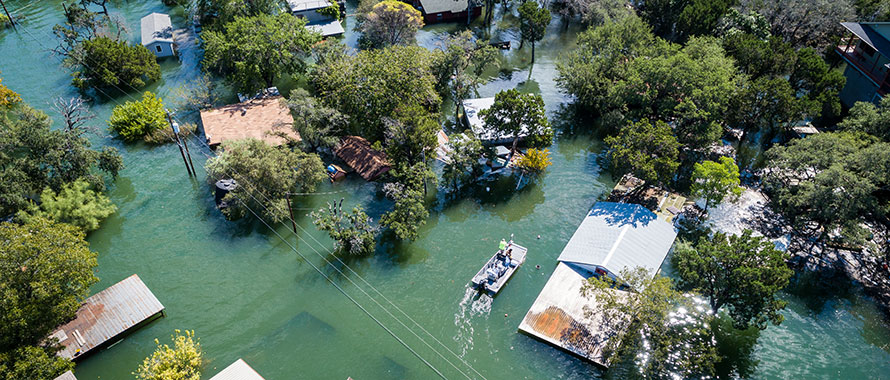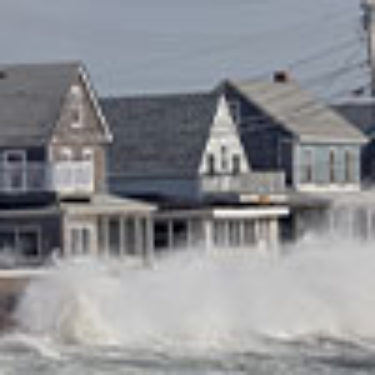A growing number of homes covered by the National Flood Insurance Program are experiencing severe and repetitive flood losses, according to data from the Natural Resources Defense Council. The number of homes categorized as severe repetitive loss properties — meaning they have either had four or more separate building or contents claims of over $5,000, or two or more separate building-only claims exceeding the value of the property — has grown almost 20% since 2020, Property Casualty 360 recently reported.
Featured Solutions
“That number is growing quite a bit,” Turner said. “A lot of properties are a lot more exposed than individuals have an awareness of.”
This was evident in recent weeks as the state of California saw record amounts of rainfall due to an atmospheric river that led to hundreds of mudslides and up to $11 billion in economic losses and damages, much of which will not be covered by insurance because most homeowners in the state do not carry Flood Insurance, CNN reported. Further rainfall put millions of California residents on flood watch as of Feb. 20, and experts say climate change could play a role in these storms becoming more frequent or intense.
“We know that these events are rare, but they are not impossible,” said Jacob Martin, Manager, Flood, Burns & Wilcox, Charlotte, North Carolina. “Just last year, California got hit by a hurricane; that had not happened in almost 100 years, but we know it can happen.”
Repeated flood losses limit insurance options
Across the U.S., flooding is becoming more common; according to the U.S. Environmental Protection Agency, coastal flooding is happening more often due to rising sea levels, while extreme single-day precipitation events are also occurring more frequently. According to the Natural Resources Defense Council, less than 1% of homes covered by the National Flood Insurance Program (NFIP) are severe repetitive loss properties, but these homes represent over 10% of claims, Property Casualty 360 reported.
When a home meets the criteria for a severe repetitive loss property, insurance through the NFIP — a program managed by FEMA — is generally the only option. Under these policies, coverage is limited to $250,000 for a building and $100,000 for its contents, whereas private Flood Insurance can offer higher limits, broader coverage including loss of use, and other benefits.
“Their only option is going to be to go to the NFIP,” Martin explained. “If they are part of the repetitive loss program, no private market is going to take those on. Homes in this category are contributing an outsize proportion of the losses the NFIP sustains.”
Many homes that have had repeated losses will continue to experience flooding, Martin added. “Whenever you see a house with repetitive losses, it is the type of thing where unless the homeowner significantly changes the house to mitigate flooding, it is going to continue to happen,” he said, pointing out that many of these homes are in regulatory floodways.

Whenever you see a house with repetitive losses, it is the type of thing where unless the homeowner significantly changes the house to mitigate flooding, it is going to continue to happen.
For these homeowners in particular, continuous Flood Insurance coverage is essential. “If someone owns a severe repetitive loss property, maintaining Flood Insurance is important,” Turner said. “The NFIP is really the only option for that. Flood is one of those things where your exposure is what it is. You can definitely rebuild the home in a better way to mitigate [flood risk], but a lot of times they are rebuilt very similarly to what they were before. They should have a heightened awareness of what their actual exposure is, and if they are going to rebuild in the same place, they probably want to look at mitigating against future flood events.”
As an alternative to rebuilding, another option offered through NFIP policies is a buyout. “I do not think a lot of insureds know about that option,” he said. “Sometimes, it is the best course of action to take that money and build in another location where it is mitigated against flood at a higher level.”
Rebuilding after a flood loss is “a very long process,” Turner said. “That is a lot for anybody to endure in a lifetime. It is definitely worth exploring the options within their policy.”
Flood risk changing faster than maps reflect
According to FEMA, homeowners who live outside of “high-risk” areas for flood make up over 25% of NFIP claims and receive a third of flood disaster aid. In 2022, a Washington Post analysis pointed to “flaws” in federal risk maps that do not reflect the growing threat of flood in the U.S. The recent data showing that more repetitive losses are occurring in lower-risk areas is not surprising, Turner said.

A lot of homeowners at first do not think they are going to flood at all, so there is a lack of insurance, and the ones that do flood do not think it is going to happen again.
“What we are seeing in the last 10 years is more than 30% of claims are happening in those quote-unquote low-risk flood zones,” Turner said. “A lot of homeowners at first do not think they are going to flood at all, so there is a lack of insurance, and the ones that do flood do not think it is going to happen again. We are talking about 1-in-500- or 1-in-1,000-year events every single year now. The world is changing. Climate change is definitely a real thing that we are facing. A lot of these areas are much higher exposure than what individuals anticipate.”
While many properties may be “misclassified” as lower-risk, Martin added, homeowners may not realize that living outside of a higher-risk “flood zone” does not mean their area will never flood. “I think that is a misconception,” he said. “I hear that all the time: ‘I am not in a flood zone, my house cannot flood.’ That is not true; it is saying the chance that your house is going to flood is lower than a higher-risk flood zone.”
Although changes to NFIP’s risk-rating system went into effect in recent years that affected policy rates — in many cases, increasing rates and driving more homeowners to the private Flood Insurance market — these modifications to the program did not come with changes to FEMA flood maps, Martin said.

I hear that all the time: ‘I am not in a flood zone, my house cannot flood.’ That is not true; it is saying the chance that your house is going to flood is lower than a higher-risk flood zone.
With the NFIP’s new Risk Rating 2.0 system, evaluating a property’s risk is “much more like a sliding scale rather than black and white,” he said. “That is only reflected in the pricing model; the pricing is based on more updated data, but the flood zone information is not necessarily that way.”
Further NFIP changes have been proposed to reform the program, and its reauthorization is currently pending as lawmakers debate potential changes, Spectrum News reported Jan. 25.
“The NFIP reauthorization still has not happened yet. A lot of changes have been proposed in terms of trying to increase coverages,” Turner explained. “The stability of the NFIP long-term is something for consumers to pay attention to.”
In the private Flood Insurance market, “what we have seen is encouraging,” including an increase in options for homeowners. “That always helps when they can balance options,” Turner said. “You can partner with an insurance broker and dive into what your actual exposure looks like and get a real-world estimation of what the risk is. You want to analyze your risk every couple of years, as it is changing extremely fast right now — a lot faster than the NFIP and FEMA can keep up with in an annual mapping.”
In California, less than 2% have Flood Insurance
Many homeowners only look into Flood Insurance when they are required to carry it by their mortgage lender, with just 4% of U.S. homeowners carrying Flood Insurance as of 2022, the Associated Press reported. In California, where atmospheric rivers caused $4.6 billion in damage last winter, less than 2% of homeowners have Flood Insurance, Politico reported on Feb. 5. In San Diego, one woman impacted by recent flooding said she only learned that her Renters Insurance would not cover her $6,000 in contents damages after she tried to file a claim, KGTV reported Jan. 31.

You want to analyze your [flood] risk every couple of years, as it is changing extremely fast right now — a lot faster than the NFIP and FEMA can keep up with in an annual mapping.
Renters can purchase contents coverage for flood through the NFIP, Martin said, but the story reflects a lack of awareness that also affects many homeowners. “Your typical Homeowners Insurance and Renters Insurance is not going to cover flood. That is an exclusion under most policies, so you really do have to go and seek out a specific flood policy to cover your exposure,” he said. “There is a huge knowledge gap when it comes to flood not being covered by Homeowners Insurance.”
Much of California is considered at low risk for flood, Turner noted, “but this is the second year in a row where you have seen major, major flooding across the entire state related to these atmospheric events,” he said.
“The atmospheric rivers are pretty common. They are carrying so much more moisture now and a lot of the flood maps in California do not address that,” he said. “California is one of those areas that is always perceived to be, for whatever reason, a low-risk, low-flood area, but it is a very interesting climate and terrain there. I am hoping these events call some attention to some individuals in the state because it is definitely a heightened exposure that I think is going to increase over time.”








